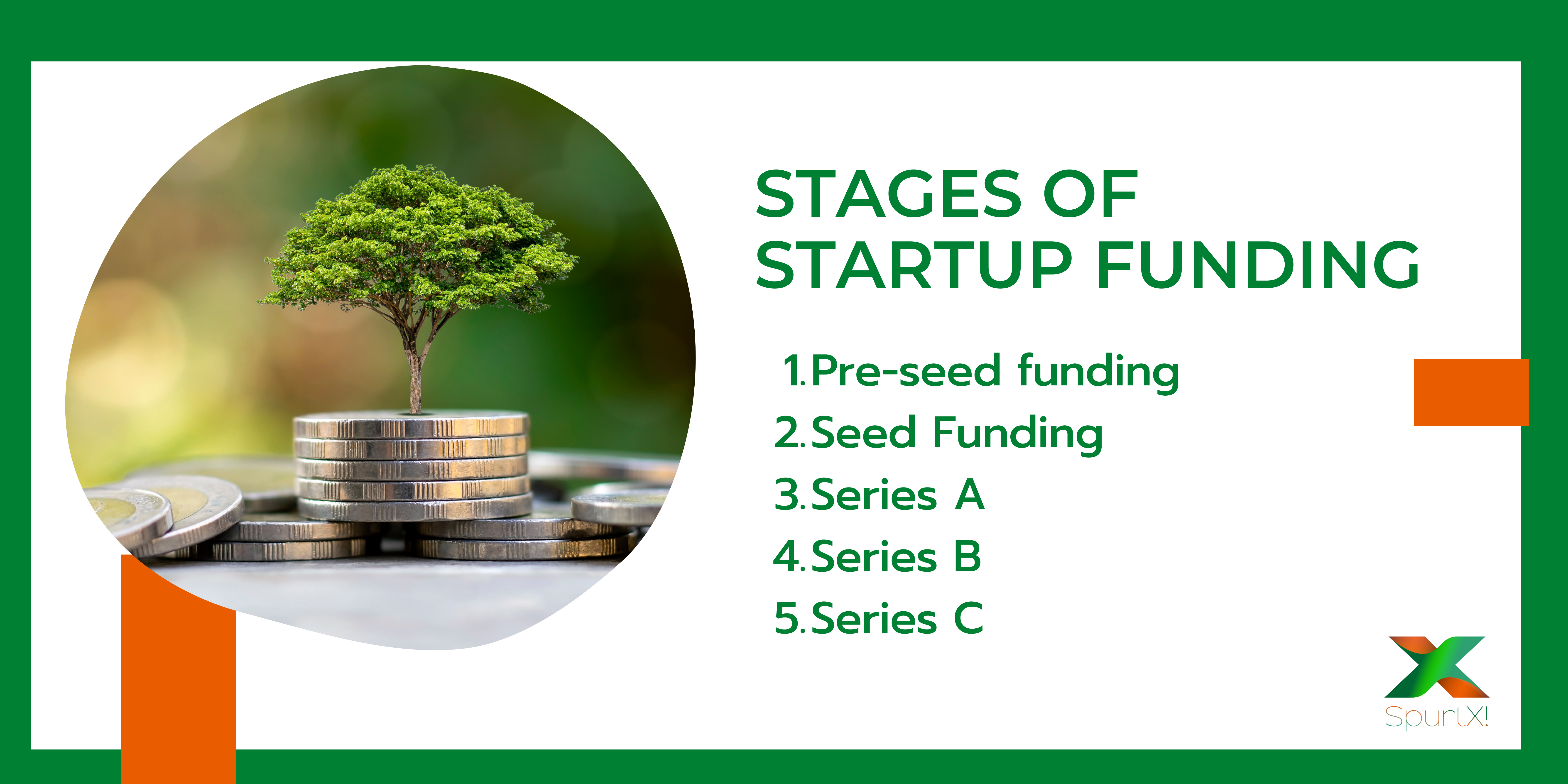Navigating the Five Stages of Funding for Your Startup
Startups are young companies founded by one or more entrepreneurs to create unique and innovative products and/or services. The entire point of a startup is rooted in innovation. A startup could aim to improve existing products in the market or create a new category of products.
When you want to apply for a grant for your startup, you may have come across terms such as “pre-seed”, “seed”, “series A”, etc. These refer to your startup funding stage. In this article, we are going to discuss the different startup funding stages in comparison to the five stages of grief.
"Grief? What do you mean by grief?"
Yes, Grief. Starting and running a startup is not easy and one of the biggest challenges a lot of founders face is funding. Same as grief, you will go through various stages of emotional state depending on your startup’s development phase.

Pre-Seed Funding (Denial):
This stage usually occurs at the early stage of your startup. As the name implies, “pre-seed” funding occurs before operations begin. It is when your startup is still in the idea stage and you need funding to bring your idea to life. The pre-seed funding is usually provided from the founder’s savings, family, and friends.
This funding is usually used to conduct market research, recruit employees, and develop an early product or service prototype.
At this early stage, founders are usually bursting with excitement and enthusiasm about their idea. As you begin your journey of running your own startup, you may be in denial of the challenges that lie ahead of you.
Seed Funding (Anger)
At this stage, your idea has become an actual business. This is usually a period of frustration as you would be facing a lot of rejection and obstacles while running your company. This frustration would lead to anger.
This stage is when you have built a minimum viable product (MVP) or a prototype and you are seeking funding to develop the product. This stage of funding is usually used to fund product development, marketing, market research, team growth, and product launch.
Potential investors of seed funding include startup accelerators, incubators, angel investors, and Venture Capital (VC) companies.
Series A Funding (Bargaining)
At this stage, you are starting to come to terms with what it would take to run your company as you begin to make progress. This period involves a lot of negotiation and compromises just to secure funding. This is because investors at this stage would want to receive equity and shares in your startup in exchange for their funding.
Your startup reaches the Series A stage once it begins to show traction in terms of product development and your business operations. Series A investors are not just looking for great ideas, they also want to see that you can turn your great idea into a successful business.
The capital in this stage is used to further develop the product, accelerate your growth, optimize your customer base, and scale overall operations.
The investors in the Series A round are usually Venture Capital firms and angel investors.
Series B Funding (Depression)
This stage is preceded by Series A funding, which is usually estimated to last for about 12 to 15 months.
At this point, your startup must have experienced significant growth in terms of customer base, revenue generation, and market traction. This stage also comes with more challenges as your goals and responsibilities increase. Compared to the previous stages, funding is usually difficult to get as the stakes are much higher and investors are usually wary at this stage. This may result in feelings of sadness, withdrawal, and depression.
This stage of funding is usually larger than that of Series A, with startups receiving tens to hundreds of millions of dollars in capital from investors. The main purpose of this round of funding is to scale your startup’s growth and market reach.
Series C (Acceptance)
This is usually the last round of funding for most startups, although many companies conduct further rounds of funding such as Series D and E. Once you reach and progress past this stage, you would have gone through a series of challenges and learnt many lessons. You are finally able to acknowledge what it takes to run a successful company and you have a clearer understanding of your market, product, and customer base.
The funding from this round is used to develop new products and expand into new markets. Similar to Series A and B, you would be receiving capital from investors in exchange for shares in your company.
At this point, your business is already well-established and profitable. Investors are not typically as hard to come across since there are low risks involved.
Before you begin to raise funding/capital for your startup, you must figure out what development phase you are in and what rounds of funding to apply for.





